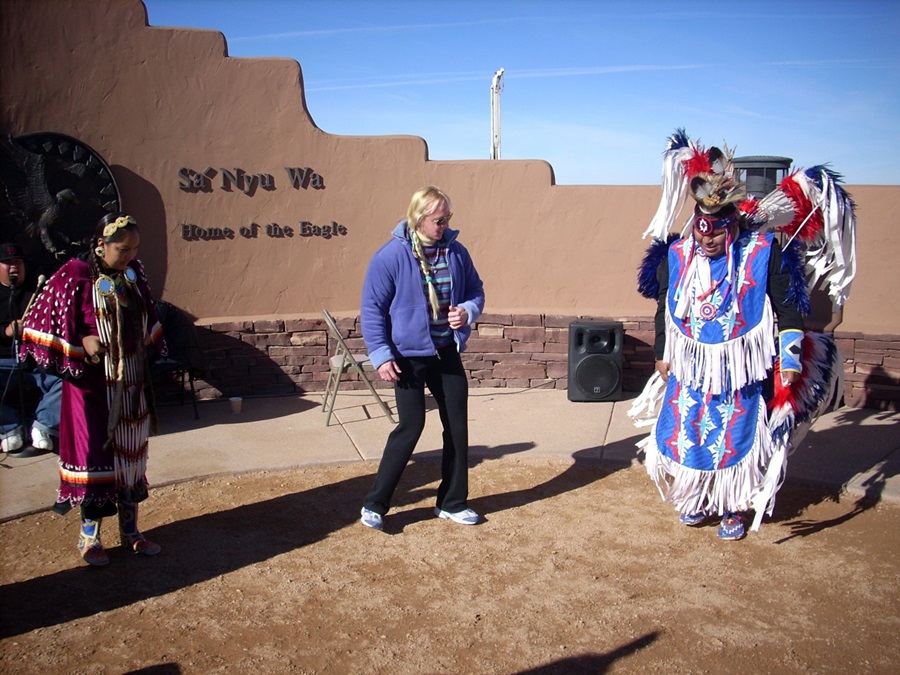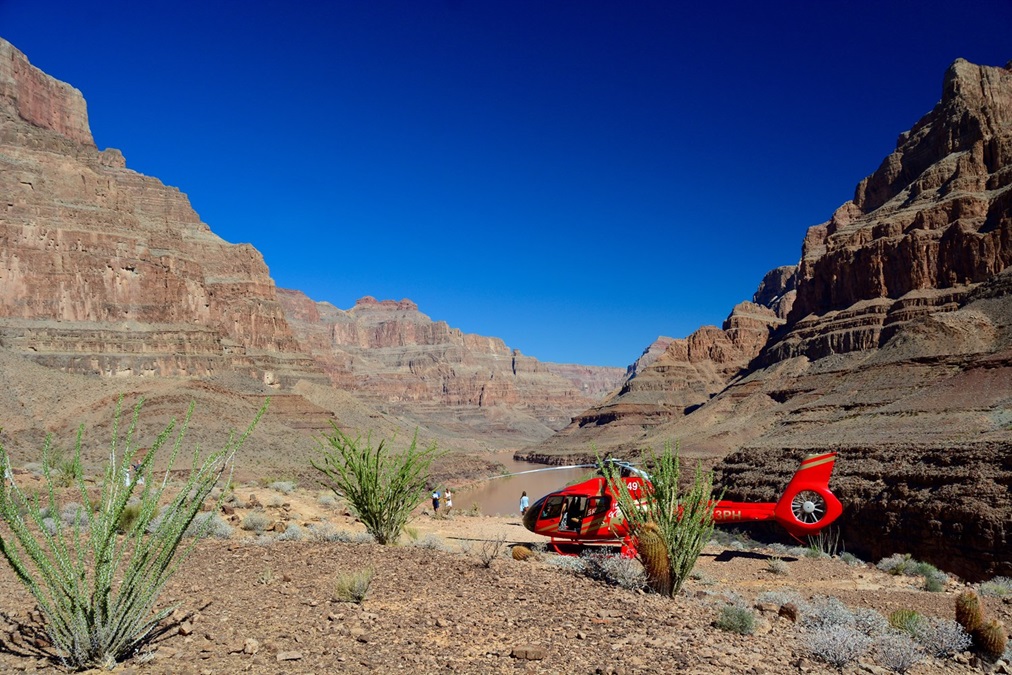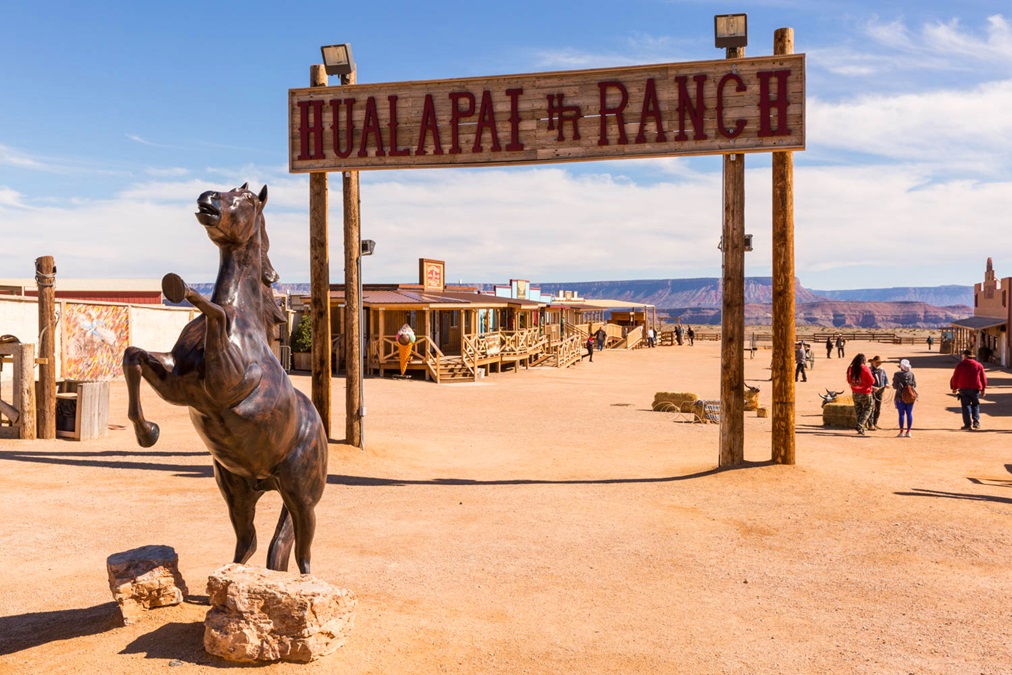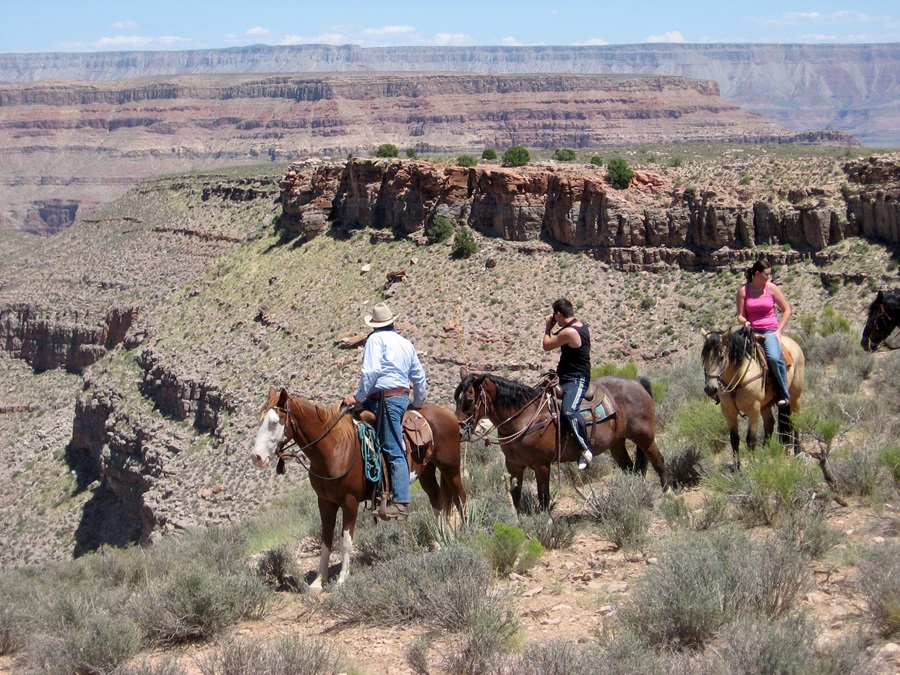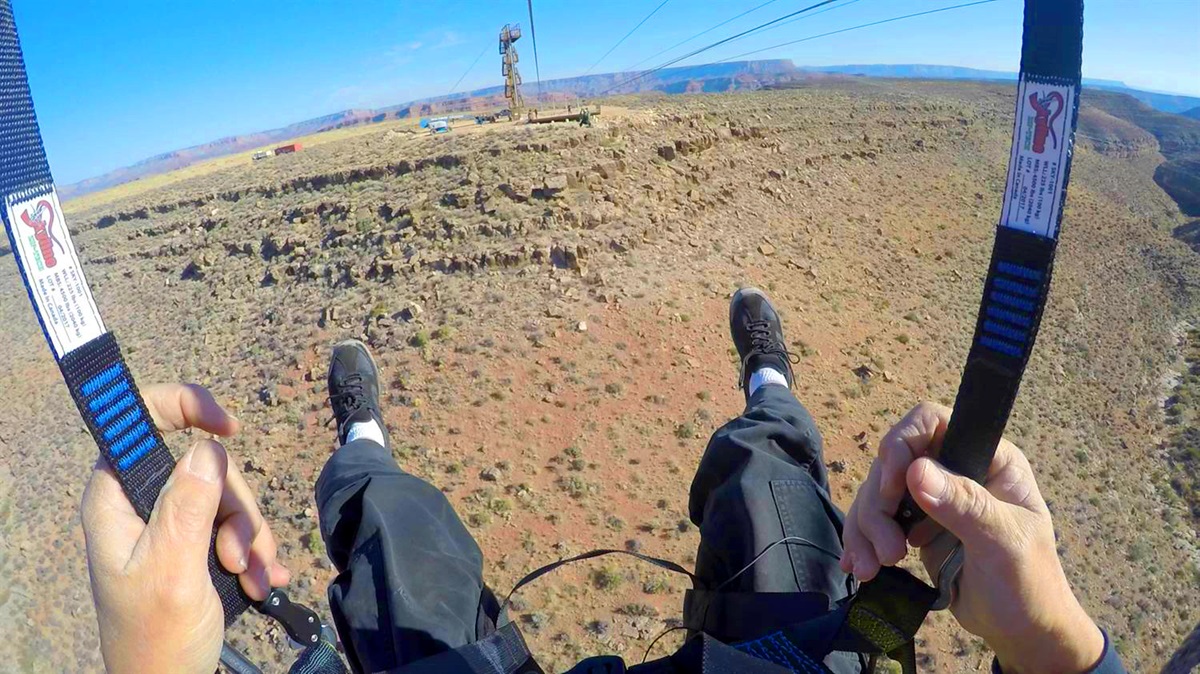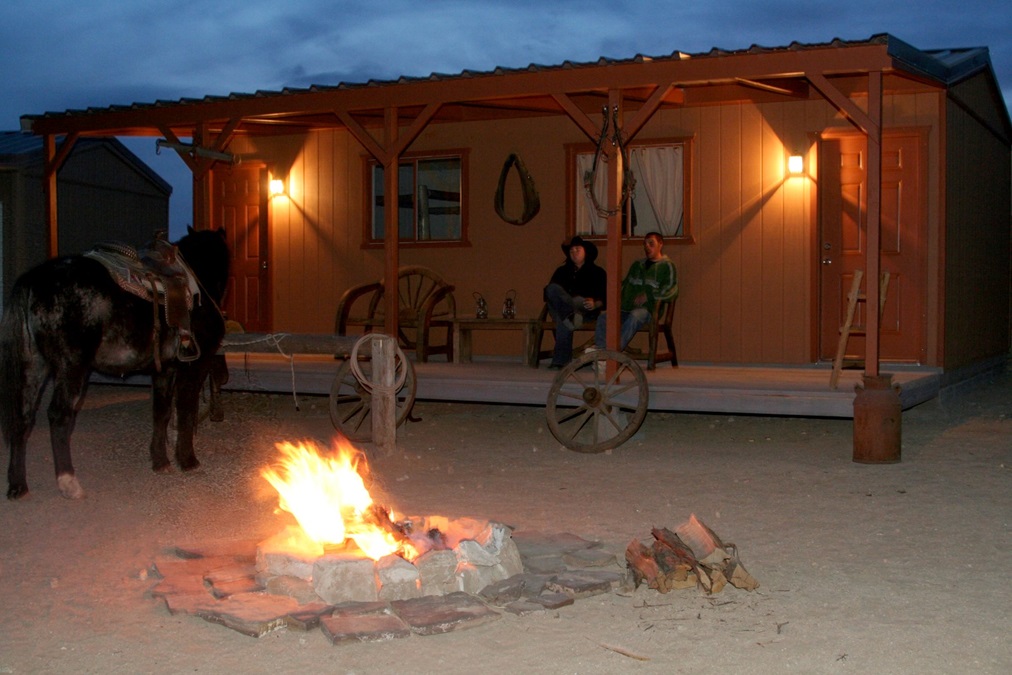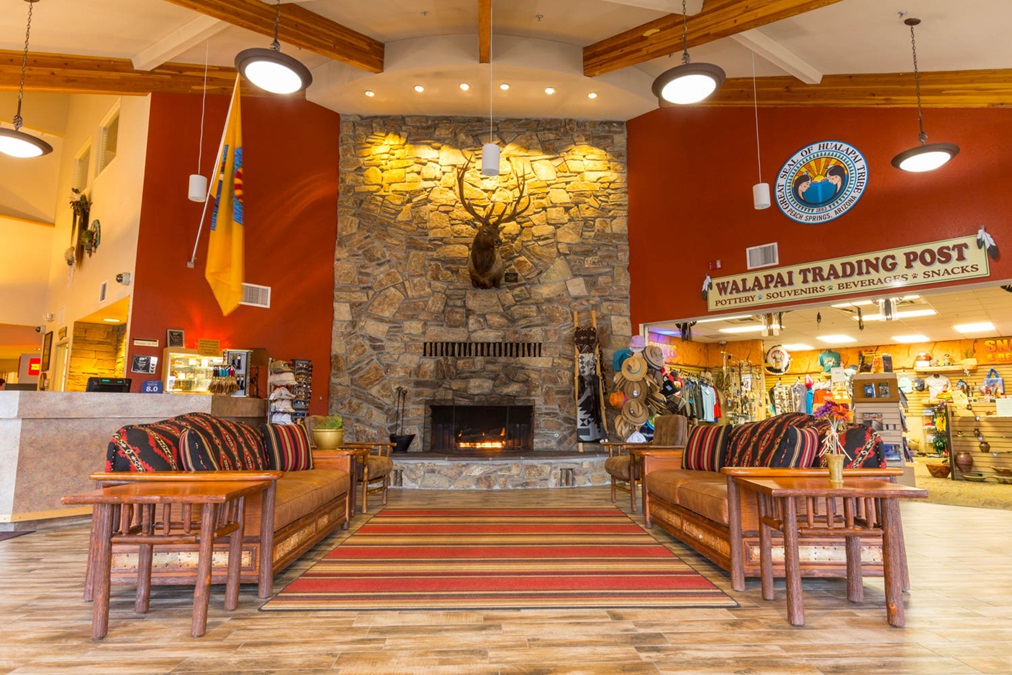Walk the sky with the Hualapai
Grand Canyon West, Arizona
Experience the Grand Canyon in four radically different ways: Stand on a piece of glass 70 feet past the edge of the canyon with 4,000 feet of air below you, zip across a wide chasm, helicopter into its depths, or raft down part of the Colorado River. All this and more is possible when you land at Grand Canyon West.
Our first “visit” here came courtesy of a blown forecast. The ice-laden clouds from a stalled, cut-off low pressure system were supposed to lift long enough to let us scoot beneath them from Lake Powell home to California. Before Lake Mead, however, ceilings were dropping fast, so we dropped in to Grand Canyon West, on the Hualapai Indian Reservation. The tour helicopters were also grounded, so we sat around and made small talk until the clouds lifted enough for us to continue home. Not much else was available for visitors except a bus to the rim. That was October of 2000. Flash forward to our first return in 2007, right after the Skywalk opened, and boy had things changed! And now—this is one of Arizona’s busiest airports and a full-blown tourist destination with a lot of unique activities that can be fun for adults and mind-blowingly unforgettable for kids. How did this happen?
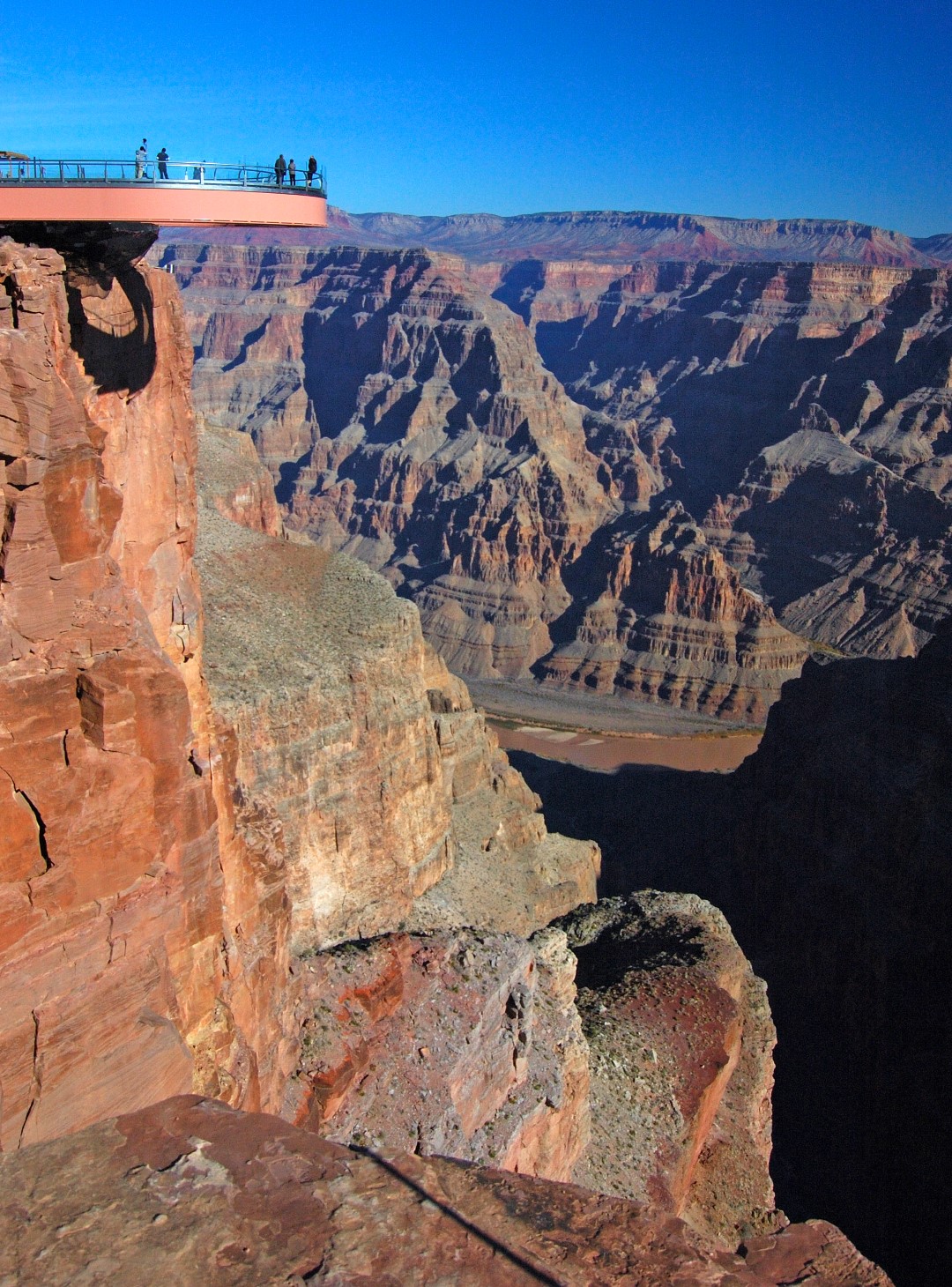
The Grand Canyon is perhaps the most famous natural feature on Earth. The forces of erosion and time required to remove so much rock are beyond comprehension, and the remaining red, stacked palisades are more beautiful in the changing light than any man-made structure. Chinese tour operator David Jin stood at Grand Canyon West’s Eagle Point, watched birds hovering in the updrafts, and dreamed of giving his clients the same view of the canyon the birds were getting. Enough tribal leaders agreed with his idea, so he assembled a group of investors: $40 million and a million pounds of steel later, the Hualapai opened one of the most unique and controversial structures anywhere—the Skywalk—where you can stand on a horseshoe-shaped plate of four-inch-thick glass, 70 feet out past the edge of the canyon, and look down to the Colorado River, almost 4,000 feet below.
Of course, you’ll want to overfly the Grand Canyon! But you can’t just fly anywhere; fetch the Grand Canyon Special Flight Rules Area VFR chart first via SkyVector or ForeFlight and fly through one of the four allowed corridors, at the directed altitude. Watch out for fixed-wing and helicopter tour traffic. To see the sights on the ground, you’ll need to purchase a Hualapai Legacy Package, about $50. Similar to a national park entrance fee, this ticket also provides unlimited hop-on, hop-off shuttle access to all viewpoints including Hualapai Ranch, Eagle Point, and Guano Point, and photo opportunities with Hualapai tribal members. (Keep in mind that many visitors to Grand Canyon West are Chinese tourists who have never met a Native American or seen the American “West” or the Grand Canyon. This is their opportunity, via a side trip from Las Vegas.)
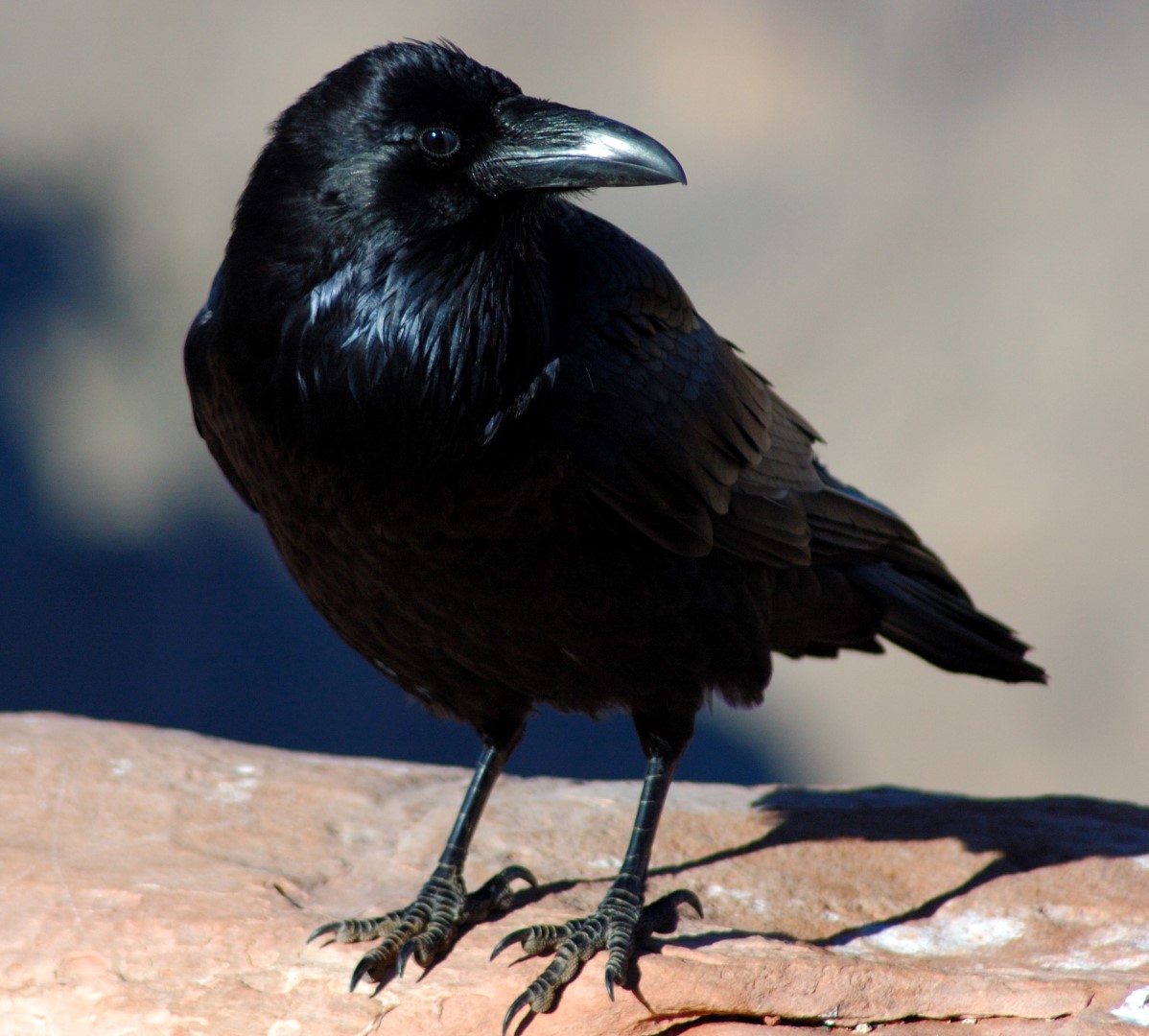
Now, it’s time to have some fun. Depending on your interests, you can choose from a huge variety of ticket packages. See photos for more details, but here are some of the things you can do: Walk on the Skywalk, of course, at Eagle Point, where you can also hike along the rim, dine while viewing the canyon, helicopter down to the river, take a pontoon boat ride, or ride the Colorado on a one- or two-day whitewater rafting trip that ends with a helicopter ride back up to the rim. At Guano Point you can hike along the rim, dine on the edge of the canyon, or buy Native-made jewelry and crafts. Stay overnight at Hualapai Ranch, which offers cabins, a gift shop, a restaurant, horseback riding, wagon and stagecoach rides, a mechanical bull, lasso lessons, and two zip lines that let you fly 1,000 feet above a side canyon. Details and final thoughts are in the photo captions.
Want another unique adventure? After you “hang out” over the Grand Canyon, fly to Grand Canyon Caverns, 15.8 nautical miles southeast of the Peach Springs VOR on Old Route 66. Explore the caverns and then sleep in the largest, oldest, deepest, darkest, quietest motel room in the world—220 feet underground—click here for more!

Share your favorite destination in the AOPA Hangar: Places to fly, things to do, where to eat!




